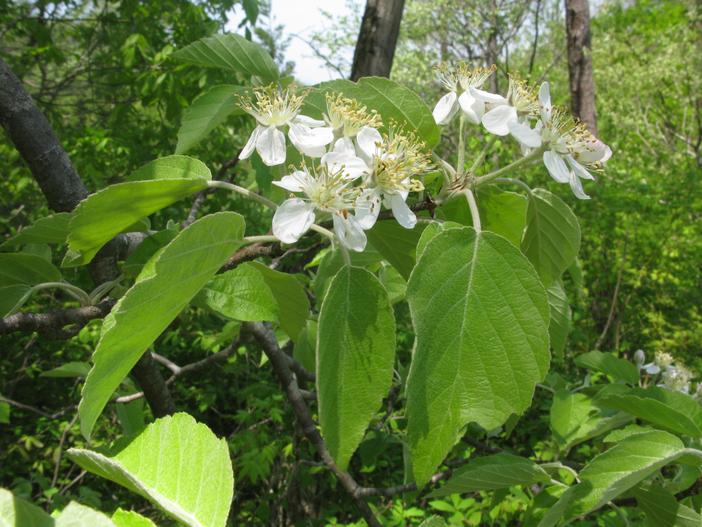Chonosuki Crab
(Malus tschonoskii)
Chonosuki Crab (Malus tschonoskii)
/
/

Qwert1234
CC BY-SA 3.0
Image By:
Qwert1234
Recorded By:
Copyright:
CC BY-SA 3.0
Copyright Notice:
Photo by: Qwert1234 | License Type: CC BY-SA 3.0 | License URL: https://creativecommons.org/licenses/by-sa/3.0 | Uploader: Qwert1234 | Publisher: Wikipedia Commons

























Estimated Native Range
Summary
Malus tschonoskii, commonly known as Chonosuki crab or Pillar apple, is a deciduous tree native to the mountain forests of Japan. It is recognized for its columnar form, making it a unique specimen among Malus species. This tree typically grows to 9 m (30 ft) tall and 1.8 m (6 ft) wide within 20 years, but it can eventually reach an ultimate height of 12 m (39 ft). The Chonosuki crab is particularly admired for its striking autumn foliage, which transitions to brilliant shades of yellow, orange, purple, and scarlet. In spring, around May, it produces single white flowers with a pink tinge, which are moderately showy and give way to rounded, red-flushed yellow-green crabapples that are ornamental but not typically consumed.
The Chonosuki crab is valued for its distinctive growth habit and vibrant fall colors, making it a popular choice for ornamental planting in gardens and urban landscapes. It is also used as a vertical accent in smaller spaces due to its narrow form. This tree thrives in full sun and requires medium amounts of water, performing best in moist, well-drained soils. While adaptable to various soil types, it benefits from a location with good air circulation to minimize disease risks. Gardeners should be aware that, like other Malus species, it can be susceptible to apple scab and fire blight, as well as pests such as aphids and caterpillars. Regular monitoring and preventive care can help maintain plant health.CC BY-SA 4.0
The Chonosuki crab is valued for its distinctive growth habit and vibrant fall colors, making it a popular choice for ornamental planting in gardens and urban landscapes. It is also used as a vertical accent in smaller spaces due to its narrow form. This tree thrives in full sun and requires medium amounts of water, performing best in moist, well-drained soils. While adaptable to various soil types, it benefits from a location with good air circulation to minimize disease risks. Gardeners should be aware that, like other Malus species, it can be susceptible to apple scab and fire blight, as well as pests such as aphids and caterpillars. Regular monitoring and preventive care can help maintain plant health.CC BY-SA 4.0
Plant Description
- Plant Type: Tree
- Height: 20-25 feet
- Width: 10-13 feet
- Growth Rate: Moderate
- Flower Color: White
- Flowering Season: Spring
- Leaf Retention: Deciduous
Growth Requirements
- Sun: Full Sun
- Water: Medium
- Drainage: Fast, Medium, Slow
Common Uses
Edible*Disclaimer: Easyscape's listed plant edibility is for informational use. Always verify the safety and proper identification of any plant before consumption., Low Maintenance
Natural Habitat
Mountain forests of Japan
Other Names
Common Names:
Scientific Names: Malus tschonoskii , Docyniopsis tschonoskii , Cormus tschonoskii , Eriolobus tschonoskii , Macromeles tschonoskii , Pyrus hoggii , Pyrus tschonoskii
GBIF Accepted Name: Docyniopsis tschonoskii (Maxim.) Koidz.